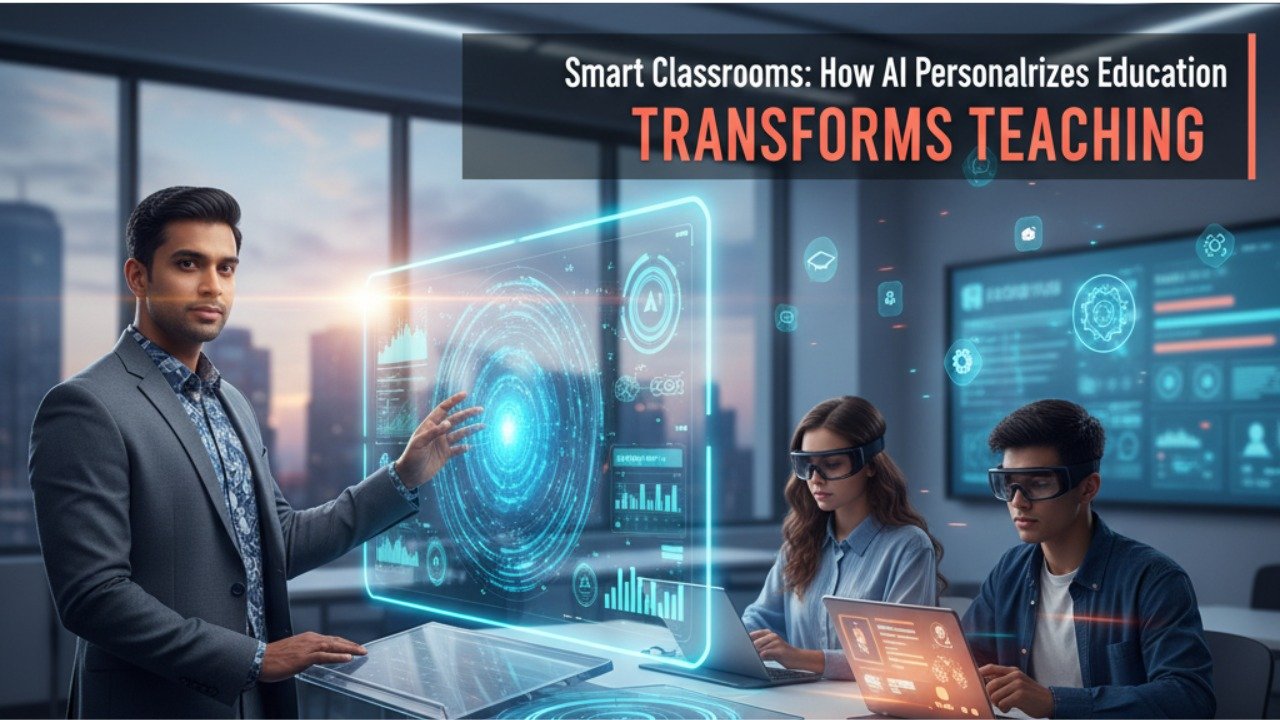
Education has always been the foundation of progress, but the way we learn and teach is evolving faster than ever before. The rise of Artificial Intelligence (AI) is reshaping classrooms into smarter, more dynamic learning environments. From tailoring education to each student’s needs to easing teachers’ workload, AI is no longer just a futuristic concept—it’s a practical tool already redefining education. In this blog, we’ll explore how AI is personalizing education, empowering teachers, and transforming the classroom into a space where technology and human potential thrive together.
Smart classrooms go beyond digital projectors and online lessons. They integrate AI-driven systems that analyze student performance, adapt learning materials, and offer real-time feedback. This evolution isn’t about replacing teachers—it’s about creating an ecosystem where both educators and learners benefit from intelligent technology.
Key Point: Smart classrooms combine traditional teaching with AI-powered insights, making learning more personalized and efficient.
One of the most transformative impacts of AI is its ability to personalize learning.
AI-driven tools adjust the difficulty of questions, recommend practice, and adapt to individual learning speeds.
Do You Know Why? Because no two students learn the same way. AI ensures each learner progresses at their own pace without being held back or rushed.
AI systems analyze student performance data—helping teachers spot weaknesses, strengths, and learning gaps.
Point to Be Noted: Data is not just numbers—it’s a roadmap for teachers to design better lessons and interventions.
AI chatbots and virtual tutors provide academic help anytime, anywhere. Students can revise, ask questions, and practice without waiting for class hours.
AI doesn’t replace teachers; it amplifies their impact.
Grading, attendance, and reports consume hours of teachers’ time. AI takes over these repetitive tasks.
Key Point: More time saved = more focus on teaching and mentoring.
AI tools help teachers create engaging lesson plans tailored to students’ learning needs.
Do You Know Why? Because teachers can spend less time preparing materials and more time inspiring students.
AI identifies at-risk students early, allowing teachers to step in with personalized support.
Point to Be Noted: Early detection prevents long-term academic struggles and dropouts.
AI is not just a tool—it’s a shift in pedagogy.
Blended Learning Models: Combining traditional teaching with AI creates hybrid, flexible learning.
Gamification of Learning: AI-powered platforms make lessons fun and engaging.
Real-Time Feedback: Students get instant feedback on tests, helping them improve continuously.
Key Point: The classroom is no longer a passive learning space—it’s interactive, data-driven, and student-centered.
Like any powerful tool, AI comes with challenges.
Equity and Access: Not all schools have equal resources to adopt AI.
Data Privacy: Student information must be protected.
Teacher Training: Educators need training to effectively use AI.
Point to Be Noted: Technology is only as effective as the people who use it—empowering teachers with skills is critical.
Looking forward, AI will bring immersive technologies like Virtual Reality (VR) and Augmented Reality (AR) into classrooms. Imagine learning history by virtually walking through ancient civilizations or exploring molecules in 3D during a science lesson.
Do You Know Why This Matters? Because hands-on, immersive experiences enhance memory retention and student engagement.
Smart classrooms are no longer a vision of the future—they’re here today. By personalizing education and empowering teachers, AI is making classrooms more inclusive, efficient, and impactful.
Key Point: AI isn’t here to replace teachers—it’s here to support them, unlocking the full potential of both educators and learners.
Point to Be Noted: The future of education is not just digital—it’s intelligent, empathetic, and deeply human.